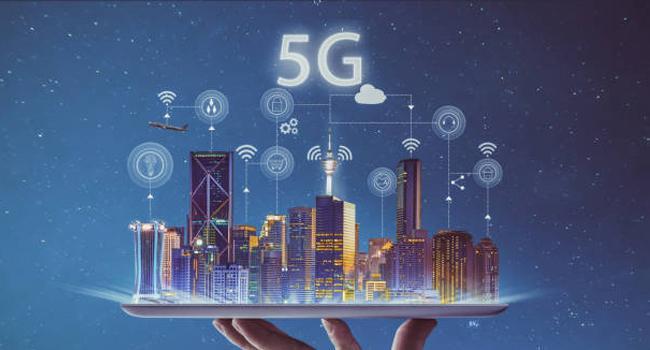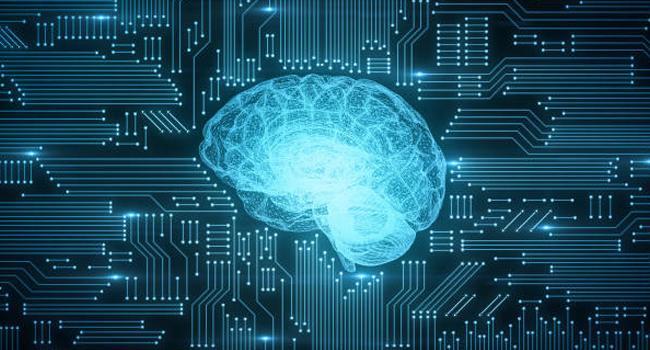5 Big IT Trends to Watch Out For

We saw advancements in technology that had never been witnessed. We’re talking about the explosion of voice technology such as Amazon Echo and the Google Assistant; low-code and no-code app development that has paved the way for fast, easy development of custom corporate apps; learning dexterity in robotics; successes in AI and natural language processing (NLP) that allow a machine to complete sentences, as well as other advances. And these breakthroughs are just the tip of the iceberg.
Technology for business and tech, in general, continues to advance, perhaps not as dramatically as before, but it will build on the groundwork already set. Here are the 5 big IT trends that could be hogging the headlines in the next few months.
Arrival of Real 5G

Nearly a decade in the making, the fifth generation of connectivity, or 5G, is finally making its long-anticipated appearance. Granted, a few carriers have already rolled out 5G-based home broadband services, but so far, none has lived up to the 5G hype just yet. Mobile 5G is really where we’ll get to experience the value of this technology in our day-to-day lives. This goes way beyond high-resolution, low-latency mobile gaming.
As soon as 5G finds its way into the corner of our mobile devices, there will be no limit to the innovative uses that can be developed and the corresponding business opportunities these can create. 5G could help business work more quickly and efficiently, enhance remote working with the availability of seamless connectivity, and provide ‘smart’ buildings in which businesses can operate. Further down the road, we could also be seeing self-driving cars that can ‘talk’ to other cars and sensors, drones that are able to transmit high-quality video in real time, and 5G-enhanced VR experience that may even allow remote surgery.
Now, not all these innovations will come to fruition this year, especially since we cannot expect ubiquitous 5G right away. Still, the impact of the future of 5G will certainly be felt soon enough, with its launch in major cities across the globe.
Resurgence of the Blockchain

Blockchain suffered a setback in the past year with the crash of Bitcoin, the dominating cryptocurrency. However, while the feasibility of mainstream cryptocurrency is presently in doubt, the blockchain technology has the potential to become a major tech disruptor in many industries. Organisations are already exploring how blockchain can streamline business processes, with some enterprises starting to create actual applications for it.
What makes blockchain a very promising technology is its inherent security. It is often described as an ‘append-only transaction ledger’, meaning, you can only add to the existing data, not take away or change anything. Moreover, no single entity has the authority to take control of the data, making it practically impossible for an attacker to maliciously add to or tamper with the chain. These characteristics present many possibilities for the use of blockchain—boosting the sharing economy (think Uber and AirBnB using peer-to-peer payment), supply chain auditing, identity management and protection of personal data, among others.
Increase in Consumption-based IT Services

The cloud has already taken off in a big way and, along with it, businesses have also been introduced to a more efficient and cost-effective way of using IT services. CEOs and CIOs now have more flexibility with their tech budgets as they can scale workloads and network resources up or down according to business requirements. With such a notable shift in the way businesses can allocate and spend for IT resources, the concept of having anything and everything as-a-service is also gaining in popularity.
Organisations see this as an opportunity to permanently switch from the capital-intensive model of acquiring costly infrastructure, to one that allows them to subscribe to certain IT services only when needed. The emergence of consumption-based IT services and pay-as-you-go schemes means that there will be less infrastructure or equipment to upgrade every so often. The efficiency of this technology for business allows enterprises to easily streamline IT operations and it significantly decreases the burden of capacity planning and promotes agility.
Rise of Edge Computing

We are now well into the era of cloud computing, that’s no secret. This means, however, that a significant percentage of enterprises, organisations and consumers rely on the infrastructure, hosting and computing capabilities of the largest cloud companies today: Amazon, Microsoft, Google and IBM. With such a huge load passed on to just a handful of providers across large geographical distances, problems could start creeping in such as latency, privacy and security and bandwidth issues. This is where edge computing comes in.
Edge is basically computing done at or very close to the source of data—hence the term ‘edge’, as opposed to the ‘cloud’ which processes data over long routes to any of the providers’ numerous data centers. The most known use case for edge platforms is in IoT, where data from IoT devices (which often have poor connectivity) is sent to a small local device that has compute, storage and network connectivity functions. The processed data is then sent to the central cloud. Edge computing can also be very useful in the analysis of time-sensitive data where low latency is required, as in the financial services and manufacturing sectors.
Advances in AI and Machine Learning

Applications that mimic human intelligence have been around for so long—from the chess machine that beat grandmaster Garry Kasparov in the 90’s, to this decade’s voice-powered personal assistants, navigation apps, and smart devices. On the business side, AI is being utilised in targeted marketing campaigns, predictive analytics, and business risk assessment, among other uses.
That said, we’ve barely scratched the surface, as AI is poised to scale new heights, largely propelled by the rapid collection of data and access to vast computing power. Machine Learning (ML) is the subset of AI that is predicted to make the most significant progress. ML and AI will be embedded in business platforms and solutions and this will boost smart business operations. Developments in autonomous vehicles and robotics are also expected as a result of the advancing technologies and algorithm.
Related Posts
By accepting you will be accessing a service provided by a third-party external to https://www.htl.london/